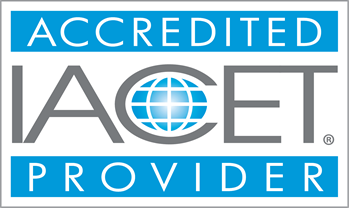Price: $74.99
40-Hour HAZWOPER Training
The 40-hour HAZWOPER training prepares emergency response and cleanup workers to work safely during a number of situations involving hazardous materials. This safety training program covers policies, procedures, and practices that decrease the risk of illness and injury caused by exposure to harmful substances on the worksite.
Course Modules - (26)
The 40-hour HAZWOPER course has been designed in
accordance with the OSHA standards. OSHA created the HAZWOPER program to
safeguard employees at hazardous job sites. When followed correctly, these
comprehensive regulations guarantee their well-being and safety.
Through this safety training program, emergency response and cleanup workers are equipped with the knowledge and skills necessary to store, handle, and dispose of hazardous substances that may pose a threat to the well-being of employees working at an industrial site.
Learning Outcomes:
- Understand safety protocols in the workplace.
- Recognize potential hazards and mitigate risks.
Completion Requirements:
- 100% appearance for the course
- Fully involvement in all class trainings (determined by instructor)
- Completion of Continuing Education and Training Registration Form
- Completion of mandatory quiz assessments
- As applicable, attainment of least passing score on required end-of-course examination
- Participation and submittal of end-of-course assessment form (must provide name on form to obtain credit)
Who Should Enroll in the 40-hour HAZWOPER Training?
You need to get enrolled in the 40-hour HAZWOPER
training if you are:
● Involved in the treatment and storage of
hazardous materials.
● Cleaning up or working regularly with
hazardous substances.
● Exposed to hazards at or above PELs or
Permissible Exposure Limits.
● Working more than thirty days a year in
an atmosphere that calls for the use of respirators and other PPE.
If you are a supervisor or in charge of those workers who perform any of the above-mentioned duties, you should enroll in the 40-hour HAZWOPER training.
How Does OSHA Competent Person Fall Protection Training Benefit Participants?
OSHA's 40-hour HAZWOPER
training can benefit workers in various sectors. This training increases safety
awareness and guarantees adherence to OSHA standards. With this certification,
workers can handle hazardous products with confidence if they have better
hazard awareness, know how to utilize personal protective equipment properly,
and are familiar with decontamination processes. The 40-hour HAZWOPER leads to
decreased risks and improved employment opportunities in fields that need
HAZWOPER training.
So, are you ready to
improve your safety knowledge and secure your future in hazardous materials
management? Don't miss out on the opportunity; enroll in our 40-hour HAZWOPER
training today!


